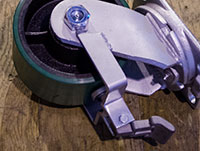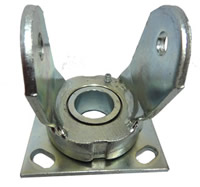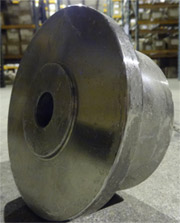There are thousands of different casters and caster wheels on the market, enough for any situation, environment, and job. Well, almost. Every now and then there is a project that requires a little extra work to meet unique and specific requirements. Thats where Service Caster’s custom fabrication team comes in.
Custom work can take the form of the very small, such as a caster stem for a chair that does not fall into the modern day standards, or the very large, such as a wheel for mining operations.

- Welding a Custom Caster
How do you take advantage of our abilities to custom make your perfect wheel? The first step is to give us a call and discuss with us the project that you’re working on. We will ask questions like, “What kind of surface will the wheels roll on?” and “Will there be high speeds, or side thrust on the caster?” These questions will help us determine if you actually need custom work, or if there is
something out there in the “caster-verse” that is readily available. Once we’ve determined you need custom work, we will develop with you the exact specification of your wheel and caster. Everything from the top plate or stem down to the very bottom of the wheel’s tread.
In addition to phone calls, specs can be emailed, and images along with physical samples can go a long way to making sure you get exactly what you need.
Finally, we’ll have our design team, machinists, and assemblers produce your custom caster!


 Flanged wheels set themselves apart from other wheels by having a lip around one or both outside edges of the wheel. Most people will be familiar with flanged wheels as those on trains or old mining carts, however they are popular for many industrial and factory setting applications.
Flanged wheels set themselves apart from other wheels by having a lip around one or both outside edges of the wheel. Most people will be familiar with flanged wheels as those on trains or old mining carts, however they are popular for many industrial and factory setting applications.